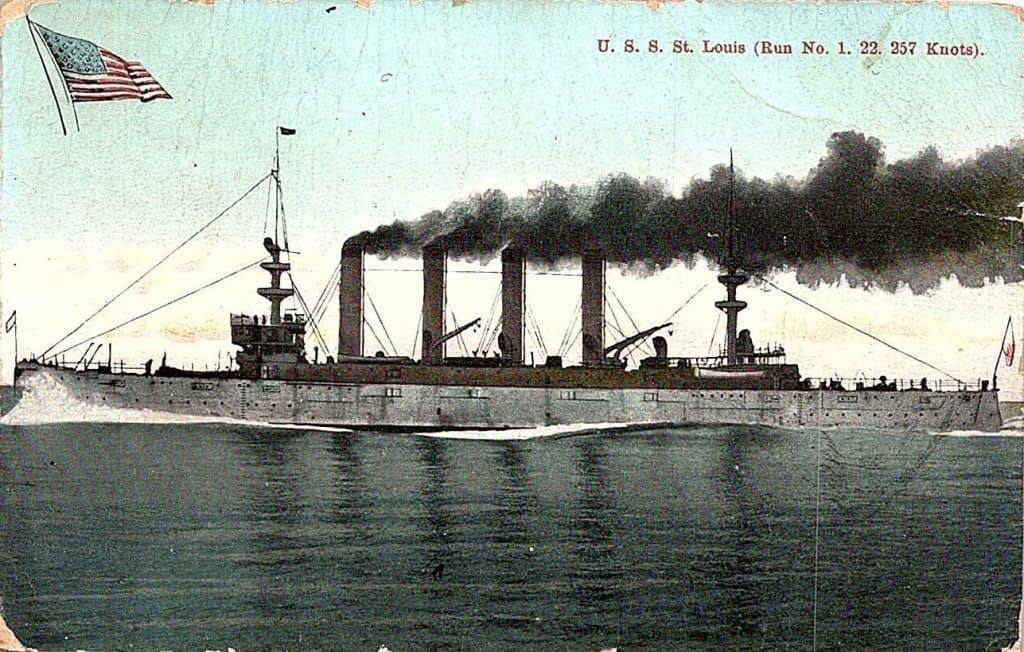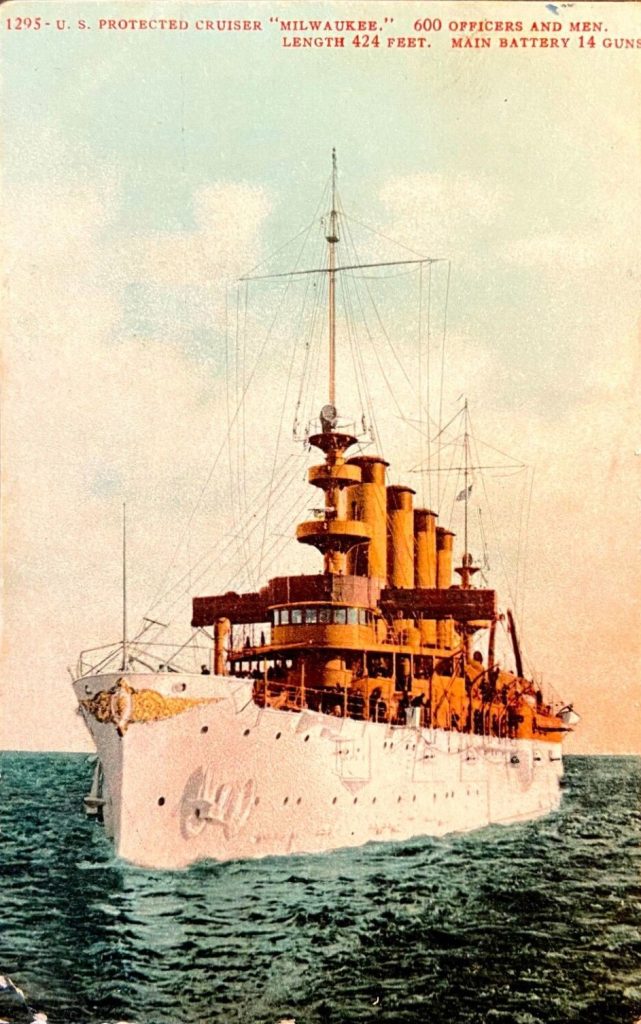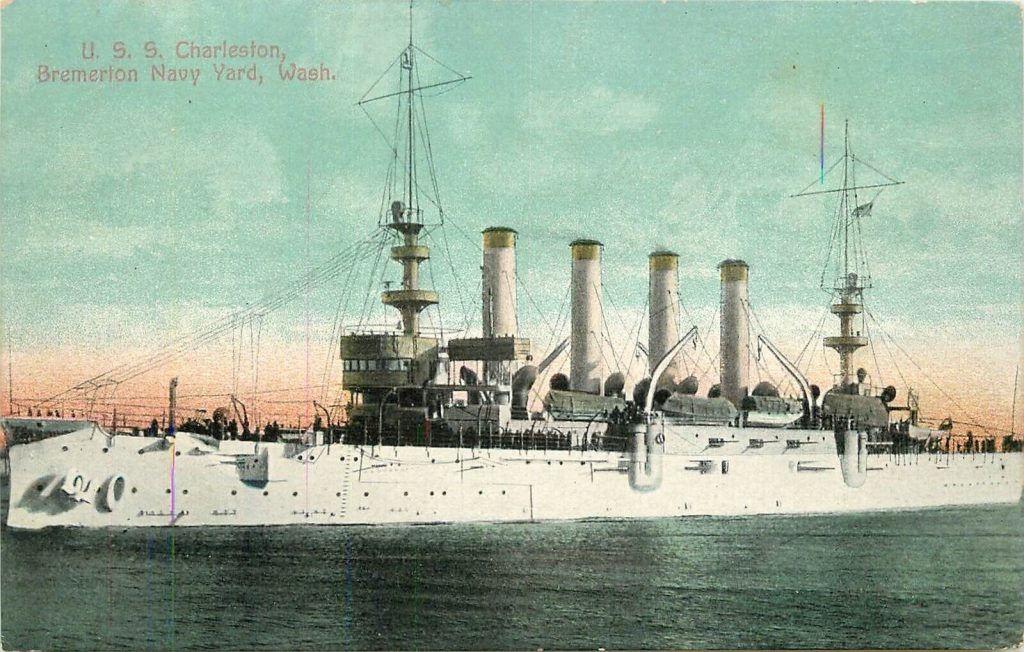 A card worth researching.
A card worth researching.
An unidentified ship, likely US Navy.
This AZO real photo postcard (use period, 1904 to 1918) of an unidentified ship seemingly beached somewhere but without a single clue was my reward for looking through a box of navy ship postcards at the 2022 “Penpex” stamp-show in Redwood City, California. Upon inspection, no hull number was found and the only clue of her American identity was the flag flying from her aft yardarm.
Questions abound. What was the name of this unlucky vessel? Where and when was she beached? What was the story behind her grounding and what was her fate? I could not wait to buy the card and get to work on solving the mystery!
Knowing that the ship was American and obviously a navy vessel, I began by listing the features of the ship. She has four funnels or stacks with armament along both sides and she was obviously an older ship probably in service around World War One or before.
With these clues and a lot of [comparison] looking, I was able to determine that she was an old cruiser of the type built at the end of the 19th century.
Checking even more details led me to a final determination that she was a St. Louis class cruiser, one of only three vessels in a class placed in service very early in the 20th century: around or just after the Spanish American War.
The ship shown on this card is USS Milwaukee (C-21) the second ship of the St. Louis (C-20) class; later followed by USS Charleston (C-22). Below are representative postcards showing all three vessels from the Protected Cruiser (St. Louis) class ships, included by Postcard History.net.

USS Saint Louis, postmarked 1909

USS Milwaukee, circa 1907, unused

USS Charleston, unused
USS Milwaukee never saw serious action, nor was it involved in battle. She was built at the Union Iron Works in San Francisco, California and was commissioned on December 10, 1906. The ship’s log is consistent with details of guarding the west coast and transporting naval militia from the west coast to Hawaii. Eventually she was assigned to duty as a tender to destroyers and submarines of the Pacific Fleet, based in San Diego, California.
On January 5, 1917, under the temporary command of Lieutenant William F. Newton, acting as a torpedo force commander, Milwaukee sailed for Eureka, California to assist in the salvage of the Navy submarine H-3 which had run aground off Humboldt Bay on December 14, 1916.
On January 13, 1917, while attempting to refloat the submarine, the commander disregarded the recommendations of local mariners, and entered the first line of ocean breakers off Sonoma, California near the coast of Eureka. She became trapped in the breakers and was unable to get free.
Four hundred twenty-one enlisted sailors and seventeen officers were safely rescued by the Humboldt Bay Life-Saving Station and local volunteers. However, every attempt to salvage the ship was unsuccessful and soon the pounding surf made it impossible. Ironically, the H-3 submarine was eventually salvaged and returned to service.
[Editor’s note: For those who are curious, the H-3 was a submarine named the Garfish. After a considerable effort to refloat the vessel, success was achieved, and Garfish continued its service to the US Navy until October 1922.]
On March 6, 1917, Milwaukee was decommissioned, and in a November 1918 storm, the keel broke in two. USS Milwaukee’s name was struck from the Naval Vessel Register on June 23, 1919, and her hull was sold for scrap on August 5, 1919.
There is a memorial to USS Milwaukee near where she became stranded and, to this day, signs of her can still be seen at low tide.
My postcard is now documented.
Mystery solved!
Fascinating story and great research. Comparing the postcard from circa 1907 to the photograph which must have been taken soon after it was beached in 1916, there had been slight improvements to its armaments.
I might agree that uncaptioned real photo postcards present a difficult research challenge but it is also very rewarding when a mystery like this one is solved.
Thank you Shav for solving this mystery and sharing your discoveries with us. Good aJob!!
I enjoy your page I love your history My friend nance use to sell the post cards in the eighties…. I had a aneurism in 2010 it great therapy for me Thanks
Excellent research.